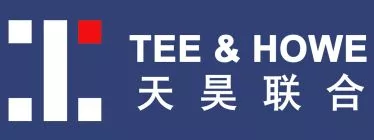- within Intellectual Property topic(s)
- in United States
- within Antitrust/Competition Law topic(s)
- with Inhouse Counsel
- with readers working within the Pharmaceuticals & BioTech industries
First, I wish you all a Merry Christmas and a Happy New Year!
Thanks to the heads-up from Aaron Wininger (https://www.linkedin.com/posts/aaron-wininger-135113_chinas-national-intellectual-property-administration-activity-7276303383370547200-GexH/?utm_source=share&utm_medium=member_desktop), the data is available from the CNIPA at the link below, announced on 13 December 2024: https://www.cnipa.gov.cn/art/2024/12/20/art_75_196756.html
While the CNIPA divided the data into various individual industries, the data available only covers the following:
- Number of licenses
- Average licensing year
- Average licensing rate
- Standard deviation (of average licensing rate)
- Coefficient of deviation (of average licensing rate)
- Annual average licensing amount
- Median of licensing rate
- Average year for the patent to generate benefits – according to the CNIPA explanation, this is the average year of a patent from the application date to the time when benefits are generated, presumably
- Average upfront payment per year, if applicable.
In addition to that the above data may not be able to tell the full picture, my observations are as below:
1) The numbers do NOT add up. Take the category manufacturing from 2019 to 2023 as an example, the total number of licenses 11633 does not match the sum of the subdivided categories (11591). In the last three categories leasing and business services, mining industry, and resident, repair and other services, the number mismatches are even more apparent. This (numbers do not add up) is not uncommon in statistics from Chinese authorities, which undermines the creditability of such data. In the discussion below, I will only use the number of the topmost categories.
2) The number of licenses is pathetically low considering the number of applications filed and patent granted in China per year (more than 900,000 granted in 2023 alone). From 2019 to 2023, each year there are about 3361 licenses recorded at the CNIPA, while there are 6017 licenses for the year 2023 alone. The numbers of telecommunication-related licenses are so low (average about 381 each year for 2019 to 2023, and 665 for 2023) that these numbers could not be real. This may be attributed to the general unwillingness to record licenses (which will then publicize at least some of the license terms).
3) The data does not distinguish recorded licenses of those from foreign and local patentees (better still, those who are actual local Chinese entities, i.e. not a Chinese subsidiary of a foreign enterprise). Without this, the achievements of the Chinese technology sector could not be told (an educated wish, yeah I just watched Deadpool & Wolverine on Disney+). May be this is the purpose?
4) This data should not include the data of open licenses, as operation of open licenses only came into force in January 2024 after the current Implementation Rules of the Chinese Patent Law, and the new Chinese Patent Examination Guidelines came into force. Having said so, this data may serve as a good starting point to see what the impact of open license in China is when the 2024 and beyond data comes out.
5) While the average license rate from this data may be useful in defending against allegations of monopolistic behaviors, specifically overly high license rate, the related standard deviations and coefficients of deviation should also be looked at. Some important categories, and categories with large deviations are as below for the year 2023:
- Computer, communication and other electronic devices manufacturing – average 11.9%, median 5%, standard deviation 0.203, coefficients of deviation 1.705
- Chemical materials and products manufacturing – average 25.1%, median 10%, standard deviation 0.360, coefficients of deviation 1.435
- Pharmaceutical manufacturing – average 4.2%, median 5%, standard deviation 0.019, coefficients of deviation 0.452
- Information transmission, software and IT service – average 6.1%, median 5%, standard deviation 0.062, coefficients of deviation 1.018
In addition to the three above, quite some categories also have a median licensing rate of 5%. Interesting, particularly when the numbers do not add up.
Just my two cents. As always, any comments will be welcomed.
The content of this article is intended to provide a general guide to the subject matter. Specialist advice should be sought about your specific circumstances.


